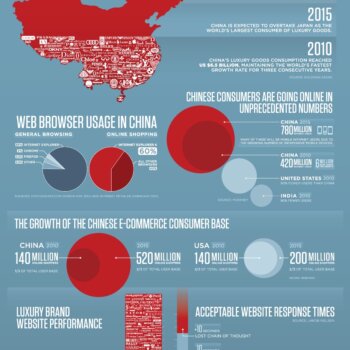Business models can take various forms, depending on a company’s strategy and the way their products and services are dispersed to the market. The taxonomy of business models defines two opposing camps: pipes (a.k.a “pipelines”) and platforms. “Pipes” refers to physical infrastructure and assets that help create products and services, metaphorically pushing out these goods for consumers. Platforms, meanwhile, are relatively intangible networks, which derive their value by matching or connecting both buyers and sellers within a multi-sided marketplace.
A social network — fundamentally a platform business — does not have value unless other people use it. Furthermore, there are many interwoven factors that influence whether an online network attracts a large user-base. Facebook became one of the world’s most valuable companies not because it was the first social network, but because of its mixed primitive foundation (both text and photo), real-name basis, and ability to achieve outsized share as the central platform for connecting people over the world wide web.
Google also largely operates a platform model. The company has engendered network effects across its various platforms, such as Search, Gmail, YouTube, Analytics, Maps, Android, Home, Cloud, Firebase, and Chrome. Search, for example, is an inherently monopolistic market. When monopolies are combined with outsized addressable markets, the attendant result is companies worth billions of dollars (if they’re managed correctly).
Apple’s meteoric rise into the world’s most valuable company wasn’t obvious 15 years ago. The company had very low penetration in desktop operating systems (less than five percent) and no penetration in mobile. The big hitters in the industry — such as Samsung, Nokia, LG and Motorola — controlled the mobile phone market with scale, abundant financial resources, valuable patents, and well-established intangible assets (e.g., brand awareness). Yet within five years after the release of the iPhone, Nokia’s business had lost 95% of its value on the public markets and Apple’s market value grew by 4x.
What happened?
Apple viewed the original iPhone as more than just a commoditised product; it was a platform that could create new value through network effects. Apple may not have had the resources of Nokia or Samsung, but strategically, it leveraged iOS as a platform facilitating the proliferation of mobile applications (“apps”). The App Store created a marketplace between app developers and app users, and its collective value grew as the number of buyers and sellers grew on either side of the market. Consequently, the value of the mobile phone increased beyond that of a basic portable communication device, skyrocketing upward as a sophisticated hand-held integrated computer that went far beyond its original intent.
Amazon is another relatively young, booming conglomerate. Amazon creates the same network effects through the size of its e-commerce platform. It now adopts the same approach Apple used so effectively, and, unsurprisingly, has seen much greater success than traditional pipe model businesses. Theoretically, anywhere there is a product to be sold, the e-commerce concept could improve on its distribution — simply by giving the customer what it wants. Specifically, that includes the ability to get the product fast, conveniently, and as inexpensively as possible.
Amazon also uses other strategies to help create network effects, such as reward-based credit and payment products to incentivise customer loyalty and subscription products (e.g., Amazon Prime) that offer value across the product and service portfolio (traditional commerce, grocery, video/music/entertainment, home services). Moreover, Amazon is notorious for its dogged approach of playing the long-term game, in which profitability is of secondary consideration to growth and achieving market share.
Types of Platforms
Although platforms typically refer to online marketplaces, they are not exclusively linked to virtual or technological companies. Commercial malls connect merchants and consumers, just as magazines, newspapers, and radio/TV media connect advertisers and subscribers or prospective consumers. However, technology and the proliferation of the internet have greatly reduced the need for physical capital and assets to push products and services to the market.
For instance, with relatively low capital, anybody can build a website accessible almost anywhere worldwide — something that wasn’t remotely feasible 25 years ago. Thus, the platform model makes building and scaling businesses cheaper and less expensive than it has ever been. Moreover, through proprietary technology, these platforms have the ability to capture and analyze massive amounts of data to help increase their value. This explains why ads through Google and Facebook tend to be much more effective for advertisers than ads through television, newspapers, radio, and more traditional media. The ads can be specifically targeted and thereby increase revenue per customer.
That said, not all companies relying on digitised platforms to get their products or services to the market are necessarily platform businesses. Expedia.com, for example, ostensibly appears to be a platform model. On closer examination, however, its fundamental focus is about getting hotel, airline, and car rental services to consumers. In other words, Expedia firmly has the consumer in mind, rather than creating network effects that must be looked at in terms of valuing both consumers and producers equally.
Pitfalls of Investing in Platform Businesses
Investing in early-stage tech — which are often platform models — is difficult. With traditional pipe models, there are tangible assets that have value. Platforms, however, are generally lacking in this regard. For example, Facebook’s asset base is approximately 24% of the size of ExxonMobil’s and merely 3% that of JPMorgan’s. Yet Facebook’s market valuation, at the time of this writing, is roughly $200 billion more than each.
Platforms will tend to have large book value multiples (value of the business divided by its asset base or tangible asset base) relative to pipe models. Banks often have book multiples of less than 1 while platform businesses are generally at 5+. This is a reflection of the different ways each derives value for their customers.
For “value” investors who require a “margin of safety” platform models may not be particularly attractive. (Venture capital in general won’t be for value types.) When investing in platform models, one’s downside isn’t theoretically delimited to losing a small portion of one’s investment. The very real likelihood is that individuals could lose their entire principal on the investment if the company never generates a profit or cash flow. The asset base for businesses built on platform models is often too small to generate any residual value for stakeholders, unlike a company with a large physical asset base. The upside, generally, is that an investment’s upside is much higher than a less mature and established business.
Improving One’s Odds When Investing in Platforms
Venture capital is a difficult form of investing, as investors are pseudo-gambling on businesses with uncertain futures, in markets with ever-changing consumer tastes. Most portfolio companies in early-stage venture investing are going to be zeroes (literally).
However, certain criteria can be adhered to, which will likely improve one’s odds of making investment decisions that have comparatively reduced risk and higher upside potential. This is most relevant toward platforms but can also be employed toward pipes:
1. Is there a demand for the company’s products or services?
The most common reason why startups fail is because there simply isn’t sufficient demand for their products or services. There are many reasons why startups fail:
— the lack of a market need for a company’s product or services (the primary reason some 40%-50% of the time);
— running out of funding or inability to obtain funding;
— unit economics didn’t work, poor business model or poor marketing;
— competition;
— low-quality product;
— lacked the right talent;
— mismanagement;
— lost passion, burn out;
— lack of cohesion/harmony among team members and/or investors;
— legal challenges;
— failed pivot, or failure to pivot if necessary;
For those looking to invest in startups or advise them, it’s always prudent for the company to form a marketing strategy before they officially begin operations (assuming the firm is still at this point). Market research can include interviewing, focus groups, product testing, and feedback from prospective consumers. The product or service doesn’t have to be something completely unique. However, for best results, it does have to be something that makes a tangible improvement over that in which is offered by the competition.
2. Does the business have a way of establishing a monopoly?
Great businesses (from a profitability perspective) are fundamentally monopolies. Ideally, a company has intellectual property and/or proprietary technology that far exceeds the next closest competitor. Facebook’s monetisation plan relied on its ability to collect so much information about its users, to the extent that companies and individuals could generate exceptionally targeted ads far beyond what any entity in traditional media could realistically provide.
Amazon’s value proposition lies in its ability to sell virtually everything, acting as a one-stop shop for consumers. Even before it became a household name as the world’s largest retailer, its book selection was far beyond what any other retailer provided. Microsoft Office became the dominant software in millions of homes and businesses worldwide after cornering the market, improving over existing technology and successfully marketing it to consumers.
Therefore, one has to understand how a business creates money. What is its value proposition? What is it doing differently from everyone else? If that value proposition hasn’t yet been put into place (either because it’s in the very early stages or pivoting), is it credible? It doesn’t have to be complicated. A business model should be able to be explained clearly in 1–3 sentences. Nor does a business model necessarily have to be a platform model. For example, SwimOutlet.com’s value proposition is having the largest selection of available swim gear on the internet, with fast and free shipping (if above a certain price), and a price-match guarantee from competing retailers. This is simple, credible, and straight to the point in how it creates value.
3. Does it have network effects?
Startups don’t necessarily need to try and penetrate large and established markets. However, it is important for startups to envisage being a dominant force in whatever market they plan to enter.
LinkedIn, acquired by Microsoft in 2016, has little chance of ever surpassing Facebook in its valuation, but it is a company that achieved a virtual monopoly by staking itself as the official social network of working professionals. LinkedIn’s value-add, which can ultimately be monetised through ads and premium services for recruiters and job-seekers, is about networking and matching talent.
Twitter, also a niche product, evolving from restrictive micro-blogging into an increasingly go-to platform for news and broadcasting. Both of these companies achieved eleven-figure market valuations directly through their network effects.
4. Is there a framework for scalability?
Economies of scale refer to increased cost savings for every additional unit of output. That is, increased output leads to a decrease in long-run average costs. Network effects help platforms achieve scale. If a business is in an industry with low barriers to entry and high competition, it will be difficult to achieve scale.
Platform Labour: Advantages and Disadvantages
Platform models often rely on independent contractors — rather than full-time employees — to carry out the operations of the business. This shift carries with it both advantages and disadvantages.
Advantages
— It is cheaper. Independent contractors often provide what is required, albeit at a cheaper cost than going through traditional entities. Business owners can cut down on their cost structure through independent contractors, which can help control costs related to wages, training and benefits (e.g., healthcare, pensions).
— Avoids unionisation: Unionisation is beneficial to workers but “bad” for companies. Unionisation make it increasingly difficult to let go of underperforming employees and establish means of compensating employees in ways that are out of line with how they create value for the enterprise.
— Can help reduce lawsuits: Full-time employees typically have greater ability to push lawsuits onto companies of which they are either employed by, or have been employed by, in the past. These most commonly refer to wrongful termination, discrimination, and wage disputes (e.g., failure to pay minimum wage, lack of sufficient overtime pay).
— Flexibility in how workers can be deployed: Companies’ labor needs may come and go based on seasonal patterns or irregularities in workflow. Therefore, it might be inefficient to have full-time staff always on hand during certain periods. For example, a package delivery service company is going to have greater labour needs in December because of holiday-related mail flows than it will in July.
Disadvantages
— Lack of stability in staffing and potentially reduced control: Independent contractors have greater leeway in what they do, as there is less supervision and less ability to micromanage their tasks as there is with full-time employees.
— Increased risk of government audits: Companies often use independent contractors or freelancers to help cut costs. However, some misclassify employees (not necessarily intentionally), which can lead to government-issued fines, requirement to pay back-taxes with interest, and/or make them susceptible to class-action lawsuits.
— Lack of ownership over contractors’ output: Legally, a business may not own what an independent contractor produces as they do when a full-time employee creates it. Laws differ from country to country, though this issue can be mitigated beforehand with a clearly written contract.
Final Considerations
Business models can be delineated as “pipes” (products created with the consumer in mind) or “platforms” (producers and consumers interact with each other to create value on a platform that facilitates this exchange), or even a hybrid model with features of both pipes and platforms.
For investors, investing in platforms can be difficult due to the lack of physical assets that provide traditional forms of value, such as a bank using its balance sheet to create products or an integrated oil producer having machinery, plants, and refineries to conduct its operations. This means if a company ever ceases operations and stakeholders’ ultimate residual claim on the business resides in the liquidation worth of its asset base, pipe models are likely to be safer investments than platform models, which generate comparatively less value off tangible assets. But investors can help assess a platform’s (or any company’s) future prospects by considering the following:
1. Is there a market need for what is being offered?
2. Does a viable path exist to establishing a monopoly in its niche/industry?
3. Does it (or can it) create network effects?
4. Is a framework in place for scalability?
Platform models also, generally, employ labor differently from pipe models. This point has both advantages and disadvantages. For those operating or investing in pipes, it would also be wise to assess how significant the threat of disruption from platform models is. Hotels, taxi services, retail, and media companies all traditionally operate on pipe models, and are being disrupted by companies that fundamentally operate as platforms, including Airbnb, Uber, Amazon, Facebook, Netflix, and other recently formed businesses.
Pipe companies must also implement platform business strategies into their models, else risk existential uncertainties — if, of course, they aren’t facing this pressure already.
About the Author
This article was written by Jordan Lee.





























